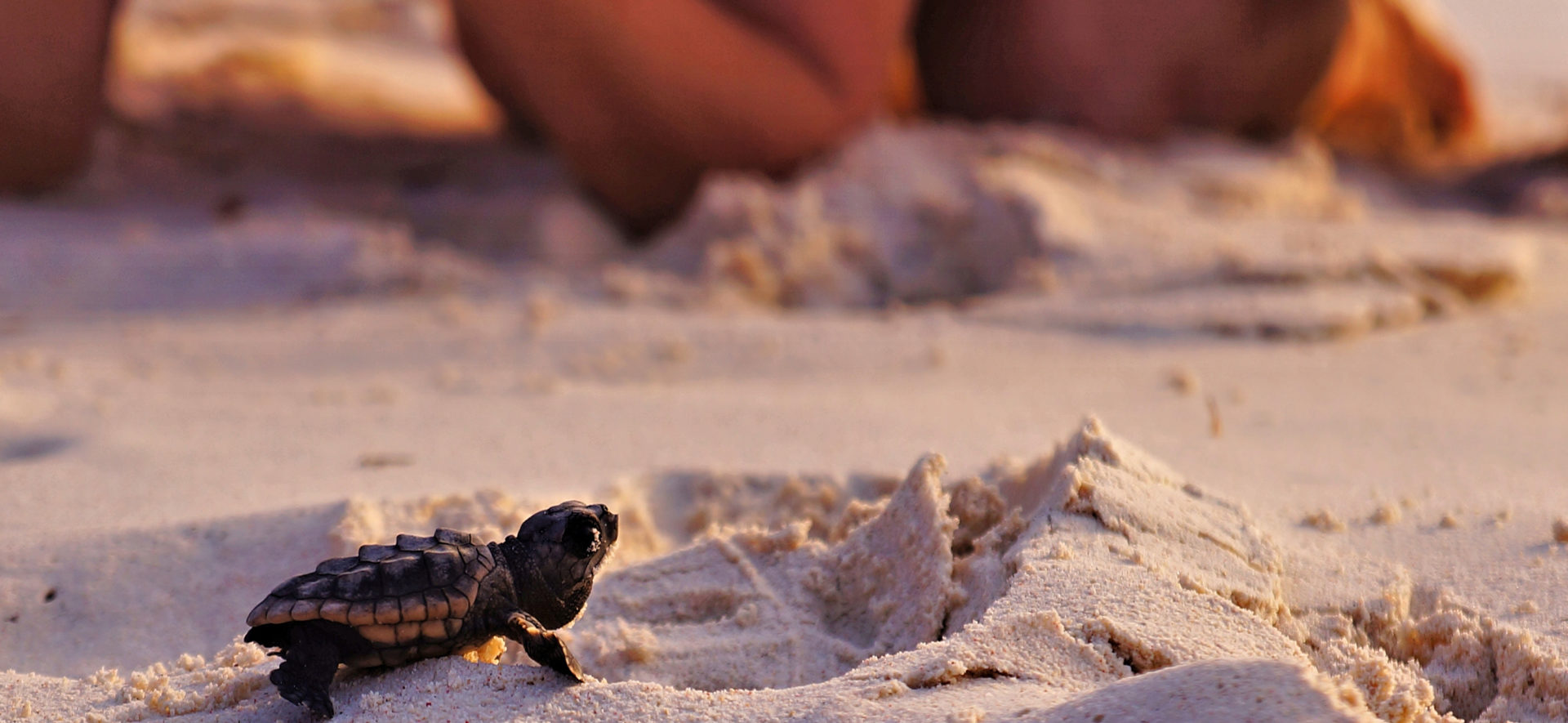Did you know? Turtles will always return back to the same beach where they were born to nest their turtle hatchlings.
A Close-up with Sea Turtle Hatchlings
It’s officially sea turtle season from May 1 to October 31 in Miami, which welcomes a wondrous spectacle of sea turtles scrambling out of their nests to find new homes in the Atlantic. At Acqualina, we celebrate sea turtles at our beachfront resort. The AcquaMarine Kid’s Club features a sea turtle experience where you can learn about the different types of sea turtles and their nesting habits. This is by far the most popular activity for campers and their families.
In our “Bringing Acqualina to You” virtual series, you will learn fun facts about sea turtles, an ancient species that have been around for millions of years. We also included some arts and crafts for you and your children.
As the sun rises over Sunny Isles Beach, you’ll see the beginnings of a perfect Miami day by the ocean — seabirds calling, waves softly crashing, and the signature red umbrellas and couches of Acqualina Resort being set up for the blissful hours ahead. You may also spot the Miami-Dade County Sea Turtle Conservation Program as they conduct their daily survey, looking for signs of new sea turtle nests and monitoring existing ones to see if, perhaps, its little ones have hatched overnight. During each season, Miami sees about 600 nests — and numbers are increasing.
Species of Sea Turtles
There are seven different species of sea turtles of which the Loggerhead, Green and Leatherback can be found nesting on our beautiful beaches.
Loggerhead
Most common nester in Miami and they peak in late May and early June and weigh between 200 to 400 pounds. They get their name from their large skull.
Green
The Green Sea Turtles have a very pretty shell and grow between 300 to 500 pounds and are the vegans of the turtle species. They nest in Miami from mid-May to September.
Leatherback
The largest sea turtles in the world, the Leatherback have unique leather and rubber skin and lack a hard shell. These turtles prefer to eat jelly fish and can dive deep to catch their prey. They grow up to 2,000 pounds equivalent to a small smart car and start nesting from mid-March to mid-June.
Hawksbill and Kemps Ridley
This species of turtles don’t nest here but we can find these turtles nesting around our reefs and in other areas off shore.
There is also the Olive Ridley that can be found throughout the ocean in both warm and cool waters. The seventh species, the Flatback, lives only in Australia.
Life Cycle
Why Conserve Sea Turtles?
Sea turtles are important for the circle of life and to our ecosystem and food web. Turtles are a key indicator of how well our oceans are doing.
Threats to Sea Turtles
- Pollution
- Chemicals
- Disease
- Fishing nets, lines and hooks
- Poaching
- Boat Traffic
- Predation
- Coastal Development
- Beach Erosion
- Beach Furniture
- Coastal Lighting
Time for some family fun!
True or False
If a member of the public happens upon a nest hatching out, they are allowed to pick up a hatchling sea turtle from the next and bring it to the water.
The answer is False. It’s illegal and we don’t want to harm the hatchlings. It suggested not walking on the beaches at night during nesting season.
Did you know?
Only 1 out of 1,000 hatchlings that make it to the water will survive to adulthood!
Sea Turtle Inspired Activities
For the Children:
Find the differences – click HERE to download
Coloring page – click HERE to download
For the Adults:
Coloring page – click HERE to download




